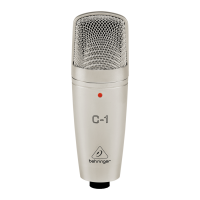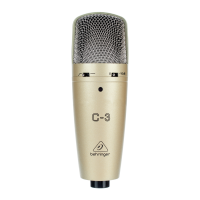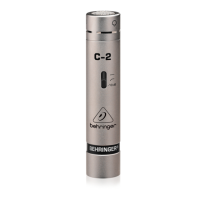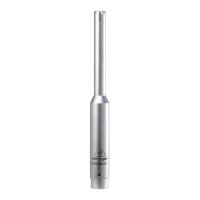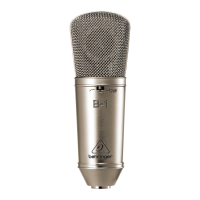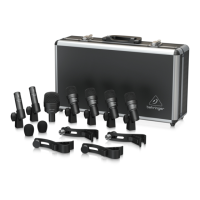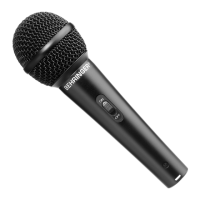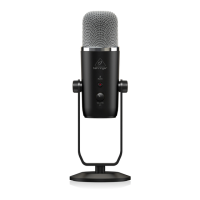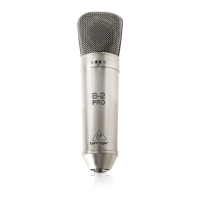3
SINGLE DIAPHRAGM CONDENSER MICROPHONES C-4 User Manual
1. Introduction
Congratulations! By purchasing the BEHRINGER C-4, you have obtained 2 condenser
microphones that oer the highest quality standards and the best audio characteristics.
Both microphones have been matched to one another (matched pair), and are
therefore particularly well-suited for stereo recordings. Of course, you can also
use the microphones individually.
Their outstanding characteristics make these microphones a valuable tool in the studio
and on the stage.
2. Power Supply
Phantom power (+48V) is required to operate your microphone. We assume no liability
for damage caused to your C-4 through defective phantom power. Before activating
phantom power, mute your playback system and connect the C-4 to the microphone input
of your mixing console. After activating phantom power, the C-4 requires several seconds
to stabilize itself.
3. Pickup Patterns
Both microphones feature a capsule with a cardioid pickup pattern. Microphones with
this polar pattern are most sensitive to sound coming from in front of the microphone,
and also to a lesser extent from the sides. Sound coming from behind the microphone
will be greatly attenuated. This makes the cardioid polar pattern most suitable for
recording individual instruments or vocals within a group.
The so-called proximity effect is typical for microphones with the cardioid pickup
pattern. Depending on the distance between the microphone and the sound source,
a slight increase in the lower frequency range occurs. The shorter the distance, the more
pronounced this eect. By cleverly selecting the position and the angle of your
microphone, you can eectively manipulate the proximity eect and thus aect how your
recording sounds. Experiment with various positions in order to gain more experience.
4. Possible Applications
Both microphones have been matched to one another (matched pair). Therefore, they are
particularly well-suited for stereo recordings. Regardless of whether you are miking
an entire ensemble or a single sound source (e.g. drums, piano or background vocals),
this pair of condenser microphones lets you achieve outstanding spatial impressions in
every recording session.
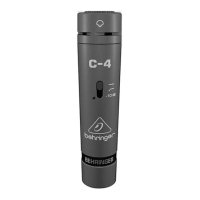
